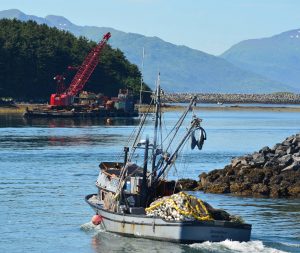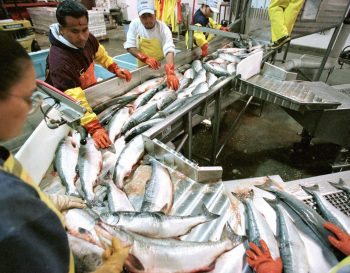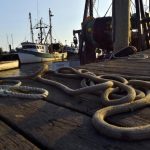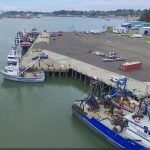Tag Archives: sockeye harvest

Sockeye harvest breaks all-time top 5; pinks picking up
The 2019 salmon season has seen plenty of fish return to the state, but far from evenly across regions. As of Sept. 10, commercial fishermen across Alaska have landed 198.4 million salmon of all five species, about 8 percent less than the preseason forecast of 213.2 million. Most of that shortfall is in pink and chum salmon, which haven’t delivered on their forecasts so far, but a surplus of sockeye salmon helped make up for some of that gap. Statewide, commercial fishermen have landed more than 55.1 million sockeye, about 9 percent more than last year and 5 million more than the preseason forecast. >click to read< 07:40

Bristol Bay sockeye harvest blowing away forecast once again
Bristol Bay is approaching the record for sockeye salmon harvest once again. As of July 21, fishermen in Bristol Bay’s five districts had harvested just more than 42 million salmon. More than 41.5 million of those were sockeye, according to the Alaska Department of Fish and Game; that’s already more than the 41.3 million sockeye harvested in 2018, the second-largest harvest on record. The largest harvest on record, which occurred in 1995, still stands at 44.2 million sockeye. >click to read< 09:40

One king salmon worth more than a barrel of oil to AK fishermen; Updates for 2018/19
Salmon stakeholders are still crunching the numbers from the 2018 season, which up front has two distinctions: it ranks as one of the most valuable on record to fishermen at nearly $596 million, and at just over 114 million salmon, it’s one of the smallest harvests in 34 years. A breakdown by the McDowell Group shows the sockeye harvest was the second most valuable in 26 years; the chum catch was the third most valuable since 1975. Audio report, >click to read<17:06
Fisheries Economist Gunnar Knapp on This Year’s Price Increase in Bristol Bay
 The sockeye harvest this year in Bristol Bay came in short of the pre-season forecast and is low compared to the harvest’s recorded in recent years. However, the base price paid to fishermen jumped up by 50-cents. KDLG’s Mike Mason recently spoke with a leading fisheries economist in an effort to explain how the base price is set and why in increased this year. Listen @ kdlg
The sockeye harvest this year in Bristol Bay came in short of the pre-season forecast and is low compared to the harvest’s recorded in recent years. However, the base price paid to fishermen jumped up by 50-cents. KDLG’s Mike Mason recently spoke with a leading fisheries economist in an effort to explain how the base price is set and why in increased this year. Listen @ kdlg















































